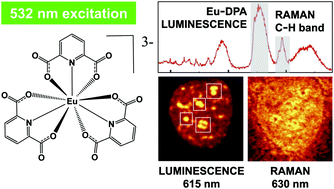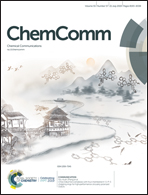Spectral counterstaining in luminescence-enhanced biological Raman microscopy†
Abstract
Cell imaging heavily depends on fluorescent labels typically incompatible with Raman microscopy. The europium(III) complex based on dipicolinic acid (DPA) presented here is an exception from this rule. Although its luminescence bands are very narrow, their intensity is comparable to the background Raman bands. This makes it complementary to less luminous compounds referred to as Raman tags. Through several examples we show that the complex provides a morphological context in otherwise unstained cells, thus acting as a spectral-counterstaining agent.



 Please wait while we load your content...
Please wait while we load your content...